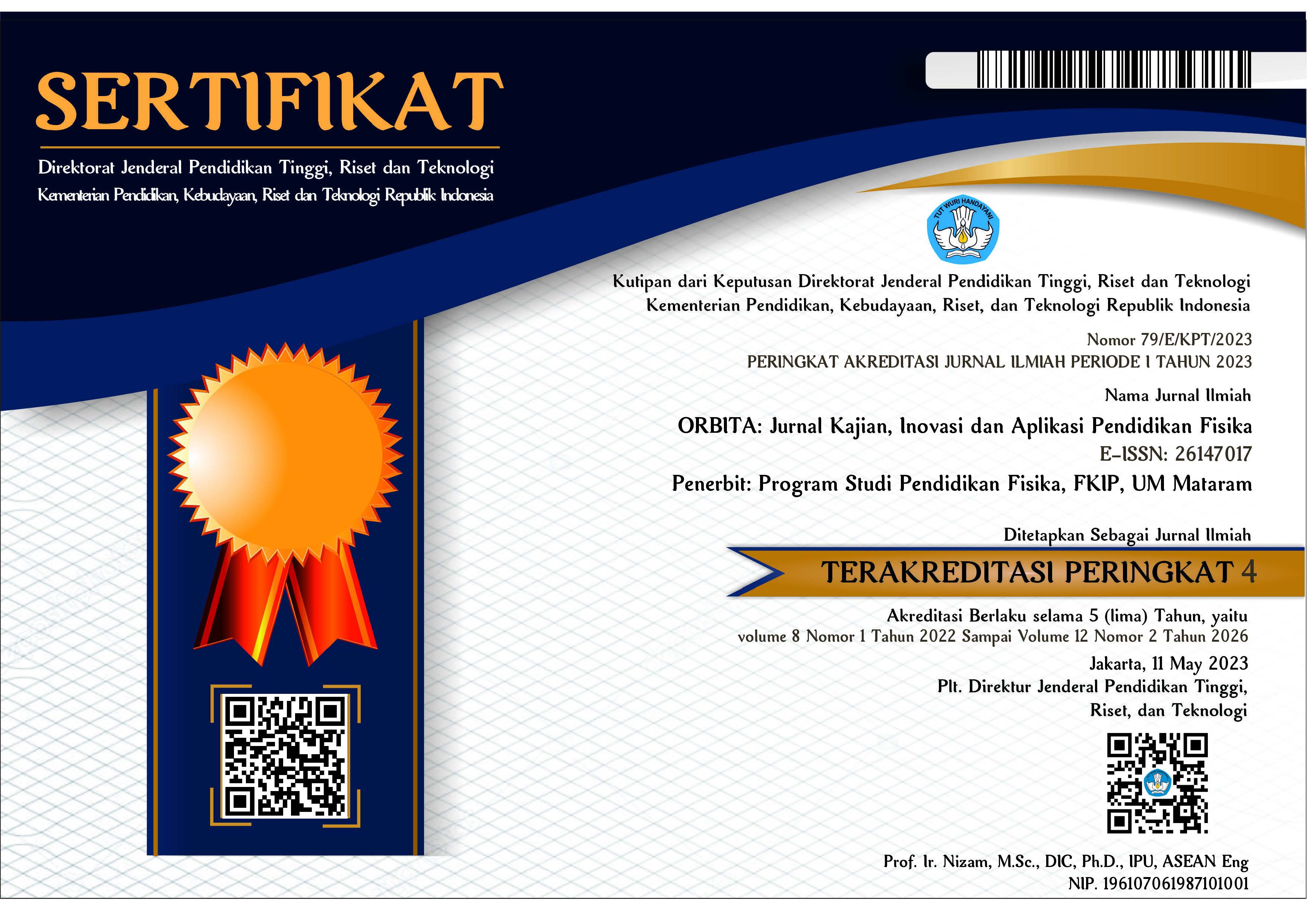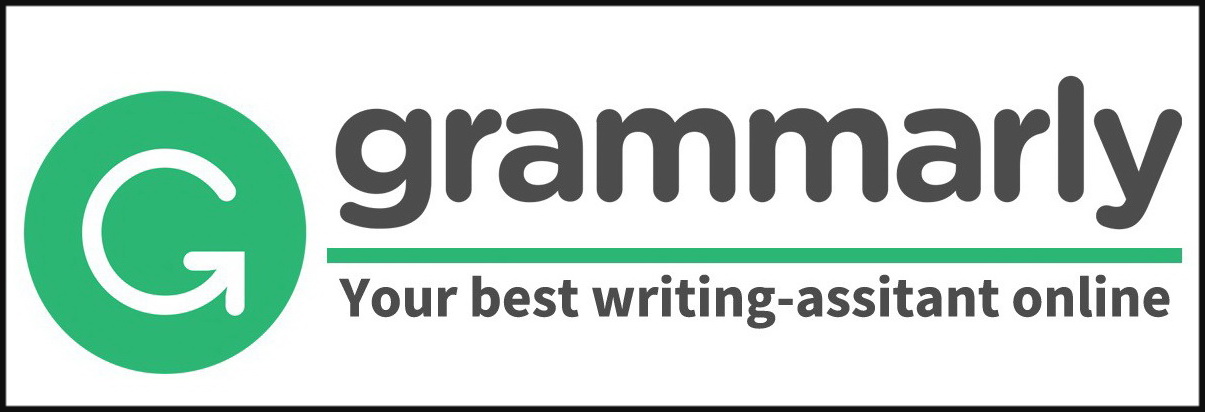Development of modern physics practicum e-guide on circular iris difraction materials to calculate He-Ne laser wavelength using professional flip pdf application
Abstract
Development of a modern physics practicum guide on circular iris diffraction material to calculate the He-Ne laser wavelength using the Flip PDF Professional application. To determine student perceptions, as well as the feasibility of developing a modern physics practicum guide on circular iris diffraction material to calculate the He-Ne laser wavelength using the Flip PDF Professional application. This research was carried out using research and development (R&D) methods. R&D is a research method used to produce certain products, and test the effectiveness of these products. In this research, the product produced is a practical guide on circular iris diffraction material using a He-Ne laser, to calculate wavelengths which are expected to increase interest in learning and understanding of modern physics concepts for students. The result of this development is an e-guide to modern physics practicum on circular iris diffraction material to calculate He-Ne laser wavelengths using the Flip PDF Professional application.This electronic practicum e-guide was developed using the 4 (D) model which consists of 4 stages, namely the define stage, design stage, develop stage and disseminate stage. The development of a modern physics e-guide using Flip PDF Professional on material measuring He-Ne laser wavelengths with a circular iris diffraction pattern was carried out to assist students in understanding the learning material so that they were able to understand the practical material on measuring He-Ne laser wavelengths with a circular iris diffraction pattern Before the e-guide was developed, a preliminary study was carried out to determine the basis for developing the e-guide for modern physics. For student responses, the average score was 3.86 and a percentage of 96% was in the very good category. The media validation results got an average of 3.13 in the very good category, for material expert validation they got a very good category with an average of 4. So the guide created in the category is suitable for use.
Keywords
Full Text:
PDFReferences
Amanda, F. D., Purwaningssih, S., & Dani, R. (2022). Pengembangan Media Virtual Laboratory Menggunakan Adobe Flash CS5.5 pada Materi Difraksi Laser. JPF (Jurnal Pendidikan Fisika) FKIP UM Metro, 10(1), 123–140.
Astrida, D. N., & Arifudin, D. (2022). Pengenalan dan Pelatihan Desain Grafis Menggunakan Canva untuk Meningkatkan Kreatifitas Mahasiswa. JPMB: Jurnal Pemberdayaan Masyarakat Berkarakter, 5(1), 65–72.
Bertolino, M., Busto, D., Zapata, F., & Dahlström, J. M. (2020). Propensity rules and interference effects in laser-Assisted photoionization of helium and neon. Optics InfoBase Conference Papers. https://doi.org/10.1364/EUVXRAY.2020.JM3A.19
Dôme, G., Gianfelice, E., Palumbo, L., Vaccaro, V. G., & Verolino, L. (1991). Longitudinal coupling impedance of a circular iris. Il Nuovo Cimento, 104(8), 1241–1255. https://doi.org/10.1007/BF02784501
Faizah, A., & Munoto. (2016). Pengembangan perangkat pembelajaran mata pelajaran teknik elektronika dasar menggunakan learning management system ( LMS ) schoology di smk negeri 2 surabaya. Jurnal Pendidikan Teknik Elektro, 5(3), 3–10.
Febrianti, F. A. (2021). Pengembangan Digital Book Berbasis Flip PDF Professional untuk Meningkatkan Kemampuan Literasi Sains Siswa. Caruban: Jurnal Ilmiah Ilmu Pendidikan Dasar, 4(2), 102. https://doi.org/10.33603/caruban.v4i2.5354
Heldalia, H., Purwaningsih, S., & Darmaji, D. (2021). Pengembangan Penuntun Praktikum Elektronik Berbasis Keterampilan Proses Sains pada Materi Optik Geometri Untuk SMP/MTs. Edumaspul: Jurnal Pendidikan, 5(1), 252–257. https://doi.org/10.33487/edumaspul.v5i1.1125
Kartika, N. E. (2017). Penentuan Kelajuan Sinar Laser helium Neon (HeNe) Yang Merambat Melalui Udara dan Fiber Optik Dengan Osiloskop 200 MHz (Nur Evi Kartika D.) 9. Jurnal Fisika, 14, 9–15.
Mahyudin, A. (2023). Pengembangan Media Pembelajaran Canva Mata Pelajaran PAI & BP Fase C - Sekolah Dasar. JIDeR: Journal of Instructional and Development Researches , 3(4), 171.
Minarni, Saktioto, & Lestari, G. (2013). Pengukuran Panjang Gelombang Cahaya Laser Dioda Menggunakan Kisi Difraksi Refleksi dan Transmisi Laser He - Ne Laser Hijau Laser Merah. Prosiding Semirata FMIPA Universitas Lampung, 1(1), 167–171.
Nurussaniah, N., & Nurhayati, N. (2016). Pengembangan Penuntun Praktikum Fisika Dasar 1 Berbasis Guided Inquiry Untuk Meningkatkan Kemampuan Berpikir Kritis Mahasiswa. V, SNF2016-RND-63-SNF2016-RND-68. https://doi.org/10.21009/0305010214
Pramono, M. E., Sari, A. P., & Prajitno, G. (2015). Kisi Difraksi. Laporan Praktikum Kisi Difraksi, 2.
Sholeh, M., Rachmawati, R. Y., & Susanti, E. (2020). Penggunaan Aplikasi Canva Untuk Membuat Konten Gambar Pada Media Sosial Sebagai Upaya Mempromosikan Hasil Produk Ukm. Jurnal Pengabdian Masyarakat Berkemajuan, 4(1), 430. https://doi.org/10.31764/jpmb.v4i1.2983
Sianturi, B. S., & Dongoran, J. (2020). PENGEMBANGAN PENUNTUN PRAKTIKUM IPA INOVATIF UNTUK SMP/MTs KELAS VIII SESUAI KURIKULUM 2013 Se-KABUPATEN TAPANULI TENGAH. School Education Journal Pgsd Fip Unimed, 10(4), 323–332. https://doi.org/10.24114/sejpgsd.v10i4.20938
Sugiyono. (2019). Metode Penelitian Kuantitatif dan R&D. Alfabeta.
Thiagarajan, Sammel, S., & D. S., & Semmel, M. I. (1974). Instructional development for training teachers of exceptional children: A sourcebook. In Journal of School Psychology (Vol. 14, Issue 1). https://doi.org/10.1016/0022-4405(76)90066-2
DOI: https://doi.org/10.31764/orbita.v10i1.22736
Refbacks
- There are currently no refbacks.

This work is licensed under a Creative Commons Attribution-ShareAlike 4.0 International License.
______________________________________________________
ORBITA: Jurnal Pendidikan dan Ilmu Fisika
p-ISSN 2460-9587 || e-ISSN 2614-7017
This work is licensed under a Creative Commons Attribution-ShareAlike 4.0 International License.
EDITORIAL OFFICE:


























